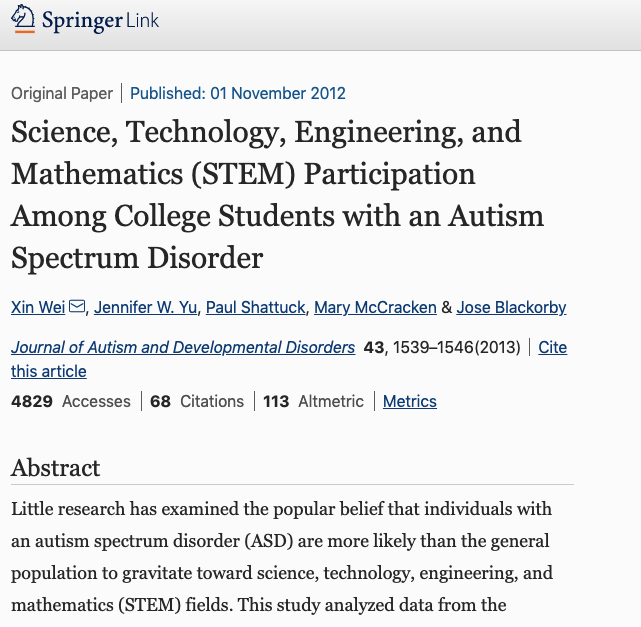Little research has examined the popular belief that individuals with an autism spectrum disorder (ASD) are more likely than the general population to gravitate toward science, technology, engineering, and mathematics (STEM) fields. This study analyzed data from the National Longitudinal Transition Study-2, a nationally representative sample of students with an ASD in special education. Findings suggest that students with an ASD had the highest STEM participation rates although their college enrollment rate was the third lowest among 11 disability categories and students in the general population. Disproportionate postsecondary enrollment and STEM participation by gender, family income, and mental functioning skills were found for young adults with an ASD. Educational policy implications are discussed.
Project: Success Predictors in Postsecondary STEM Education and Employment for Students with Autism
Download:
- Article (Springer)
Citation
Wei, X., Yu, J. W., Shattuck, P., McCracken, M., & Blackorby, J. (2013). Science, technology, engineering, and mathematics (STEM) participation among college students with an autism spectrum disorder. Journal of Autism and Developmental Disorders, 43(7), 1539-1546. doi: 10.1007/s10803-012-1700-z
Populations: Students with disabilities
Services: Research and evaluation

